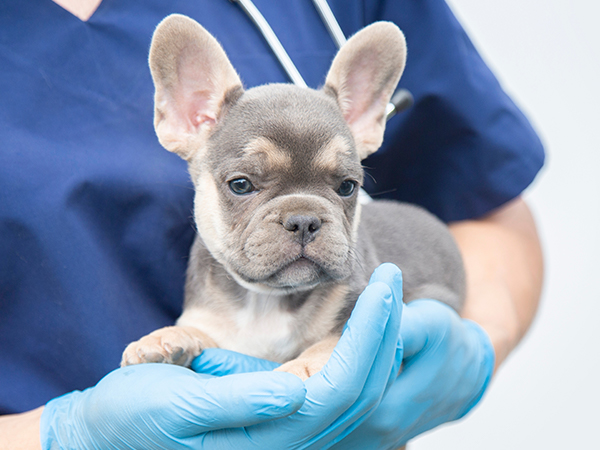A laparoscopic liver biopsy is a minimally invasive surgical procedure that allows your veterinarian to obtain a small sample of your pet’s liver tissue for analysis. This procedure is performed using a laparoscope, a thin tube with a camera on the end, which is inserted in a port placed though a small incisions in your pet's abdomen. A second port in your pet’s abdomen allows for a biopsy or other instruments to be used during the procedure. It provides a detailed look at the liver and helps diagnose various liver diseases or conditions.
What It's Used For
Indications for a Liver Biopsy: Laparoscopic liver biopsy is typically indicated when your pet has symptoms of liver disease, such as jaundice (yellowing of the skin or eyes), vomiting, lethargy, loss of appetite, or abnormal blood test results suggesting liver dysfunction.
Diagnosing Liver Disease: It can help identify conditions like liver infections (such as bacterial or viral), copper storage disease, cancer, chronic active hepatitis, vacuolar hepatopathy, toxic insult, or congenital liver disorders.
Evaluating Chronic Conditions: A biopsy also helps assess the severity of the disease and guide prognosis.
How It’s Done
Preparation: Before the procedure, your pet will need to fast overnight in preparation for anesthesia. This ensures there is a clear view of the liver during the procedure. Blood tests and other diagnostic workups will likely be performed to assess your pet’s overall health and ensure they are stable for anesthesia.
Anesthesia: Laparoscopic liver biopsy is performed under general anesthesia. Your pet will be carefully monitored throughout the procedure to ensure they remain stable.
Making Small Incisions: The veterinarian will make two to three small incisions in your pet’s abdomen, usually about 1-2 centimeters in length. One of these incisions will be used to insert the laparoscope, which has a camera and light to provide a real-time view of the liver and surrounding organs. The others will be used for instruments.
Biopsy Procedure: Using specialized instruments passed through the other incisions, the vet will carefully take several small samples of liver tissue. The laparoscope allows the veterinarian to view the liver in detail, ensuring the biopsy sample is taken from the appropriate area(s).
Closure and Recovery: Once the biopsy is completed, the small incisions will be closed with sutures or staples. The procedure usually takes about 30 to 60 minutes. Afterward, your pet will be monitored in a recovery area as the anesthesia wears off. Most pets are able to go home the same day or the day after the procedure.
Risks
While laparoscopic liver biopsy is generally safe and less invasive than traditional surgery, there are some risks to consider:
Anesthesia Risks: Any procedure involving general anesthesia carries some risk, especially for pets with underlying health conditions. Your veterinarian will perform pre-operative tests to assess your pet’s suitability for anesthesia.
Infection: Although rare, infections can occur at the incision sites or inside the abdomen after the procedure.
Bleeding: There is a small risk of bleeding during or after the biopsy, particularly if the liver tissue is difficult to access or if blood vessels are involved. However, this is closely monitored and managed by the veterinarian.
Organ Injury: There is a slight risk of accidental injury to the liver or surrounding organs, although the use of the laparoscope minimizes this risk by providing better visualization.
Benefits
Minimally Invasive: Laparoscopic liver biopsy is less invasive than traditional open surgery. The small incisions result in less pain, quicker recovery times, and reduced risk of complications.
Accurate Diagnosis: The procedure allows your veterinarian to obtain a high-quality tissue sample from the liver, which can help provide a precise diagnosis and help guide the best treatment options.
Faster Recovery: Because it is minimally invasive, your pet will likely experience less discomfort and heal faster than with traditional surgery.
A laparoscopic liver biopsy is an excellent diagnostic tool for pets experiencing liver problems. If your veterinarian recommends this procedure, it’s an important step in understanding your pet’s liver health and developing an appropriate treatment plan.







